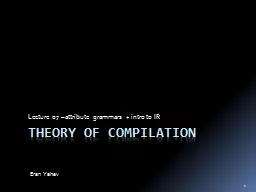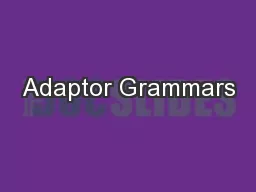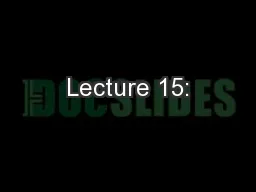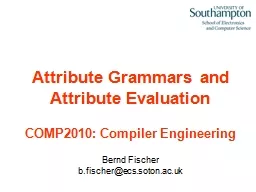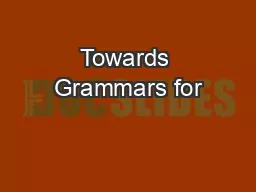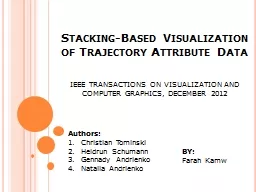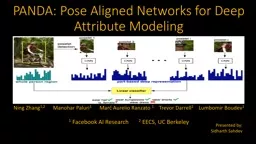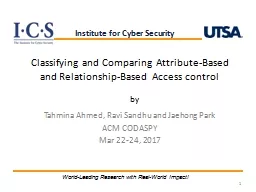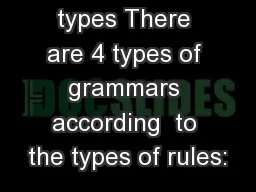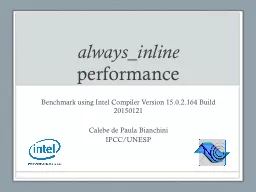PPT-Theory of Compilation Lecture 07 – attribute grammars + intro to IR
Author : studyne | Published Date : 2020-06-30
Eran Yahav 1 2 You are here Executable code exe Source text txt Compiler Lexical Analysis Syntax Analysis Parsing Semantic Analysis Inter Rep IR Code Gen Last
Presentation Embed Code
Download Presentation
Download Presentation The PPT/PDF document "Theory of Compilation Lecture 07 – att..." is the property of its rightful owner. Permission is granted to download and print the materials on this website for personal, non-commercial use only, and to display it on your personal computer provided you do not modify the materials and that you retain all copyright notices contained in the materials. By downloading content from our website, you accept the terms of this agreement.
Theory of Compilation Lecture 07 – attribute grammars + intro to IR: Transcript
Download Rules Of Document
"Theory of Compilation Lecture 07 – attribute grammars + intro to IR"The content belongs to its owner. You may download and print it for personal use, without modification, and keep all copyright notices. By downloading, you agree to these terms.
Related Documents

